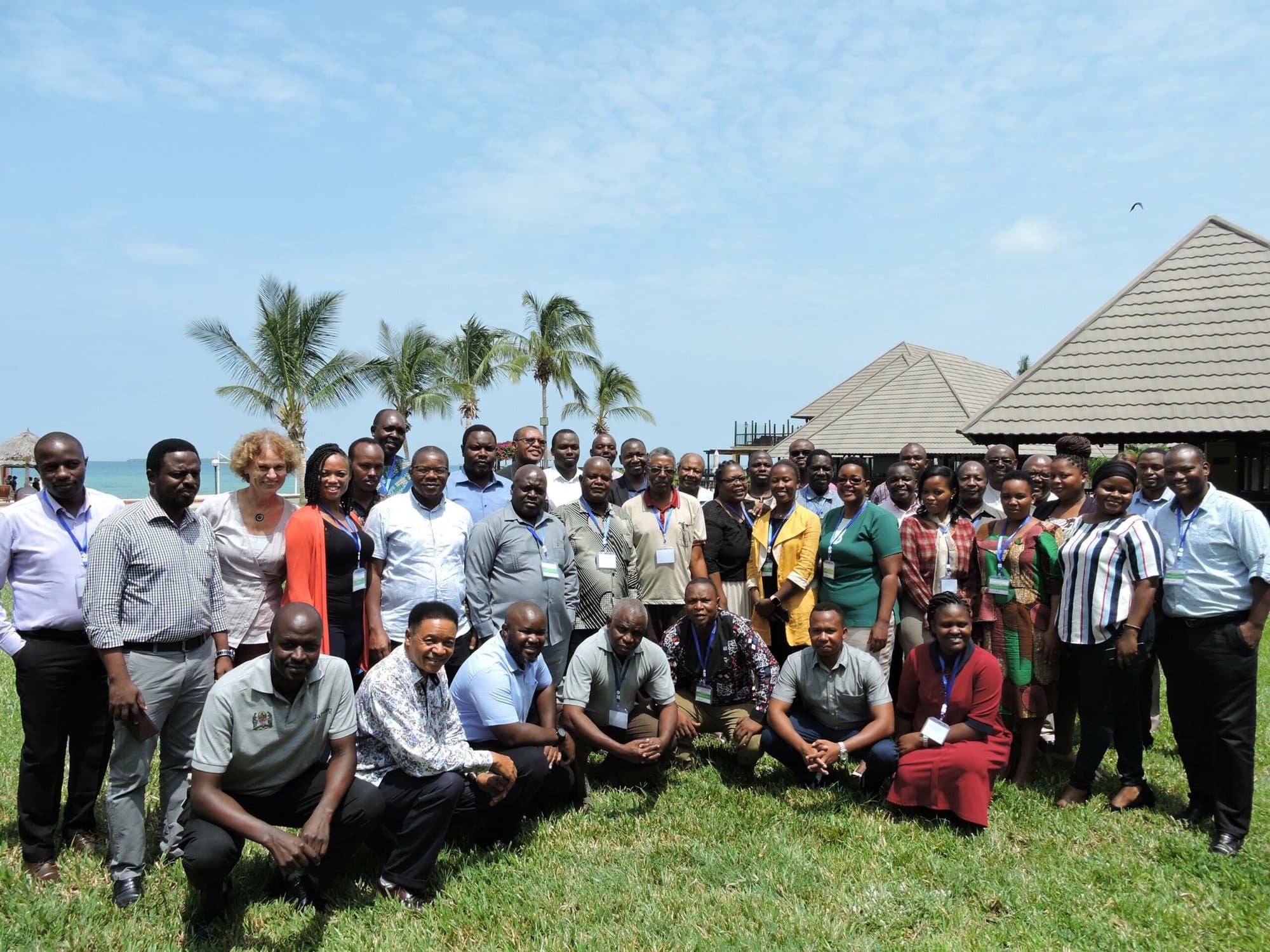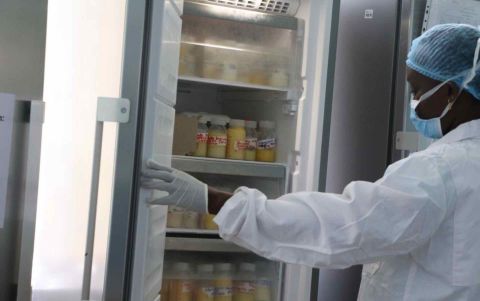
Tanzania has some of the largest livestock herds and flocks in Africa, comprising 34 million cattle, 33 million sheep and goats, and 88 million chickens. Increasing demand for consumption of meat, milk and eggs presents many opportunities for millions of livestock-rearing households to improve livelihoods, income, employment and nutrition. The main opportunity is to sustainably improve productivity and therefore increase livestock contribution to national GDP, which currently stands at just 7%.
As part of the One CGIAR 2030 research and Innovation Strategy, the International Livestock Research Institute (ILRI), in collaboration with the International Center for Agricultural Research in Dry Areas (ICARDA), the Alliance for Bioversity International and CIAT (ABC), and local partners have embarked on a new research initiative to contribute to transforming the livestock sector called ‘Sustainable Animal Productivity for Livelihoods, Nutrition, and Gender Inclusion (SAPLING)’. In Tanzania, SAPLING aims to extend recent and ongoing development gains of Maziwa Zaidi, East Africa Dairy Development (EADD), African Dairy Genetic Gains (ADGG), African Chicken Genetic Gains (ACGG), and Women in Business (WiB) projects. It was developed after incorporating inputs from an earlier stakeholder consultation on 28 July 2021.
SAPLING was launched during the inception meeting on 16-17 March 2022 at the White Sands Hotel in Dar es Salaam, Tanzania. The meeting also served as a platform to begin co-designing a theory of change (ToC) for the prioritized value chains: dairy and poultry. This was done by grouping stakeholders into their value chains of interest and engaging them in a series of iterative discussions. The groups discussed problems for each value chain and developed the visions, outcomes and innovation packages for the Tanzania ToC. These will guide monitoring, evaluation and learning (MEL) across the interventions in the dairy and poultry value chains in sites that were also discussed at the inception meeting. The same occasion was also used as a platform to validate the Tanzania Livestock Masterplan (TLMP) and align the SAPLING initiative ToC to that of the TLMP.
The inception event brought together more than 50 participants across the public and private sector, including farmers, private sector actors, representatives from the Ministry of Livestock Development and Fisheries (MLF), regional and local government representatives, and government agencies such as the Tanzania Dairy Board (TDB), the Tanzania Agricultural Development Bank (TDB), and the Tanzania Livestock Research Institute (TALIRI), amongst others.
In his official opening remarks on behalf of the director of the MLF Department of Animal Production and Marketing, TDB registrar George Msalya acknowledged the long-term collaboration between the United Republic of Tanzania and ILRI/CGIAR in research and development. He cited the co-development of the TLMP as an example.
In her address, Isabelle Baltenweck, ILRI Program Leader in Policies, Institutions and Livelihoods, stated that in addition to Tanzania, SAPLING will be implemented for 3-years (2022-2024) in six other countries including Ethiopia, Kenya, Uganda, Mali, Nepal and Vietnam. It is expected that by 2024 SAPLING will enable 800,000 producers (50% women) of cattle, chickens, small ruminants, and pigs to engage in inclusive value chains and achieve sustainable productivity gains of 30-50%.
In his welcoming remarks, Amos Omore, a principal scientist and ILRI representative for Tanzania and eastern and southern Africa, who also leads the SAPLING Tanzania research initiative, acknowledged the ongoing and increasingly fruitful collaboration between CGIAR and Tanzania’s livestock research and development institutions. He said the research agenda to be co-created during the meeting would inform the type of evidence that SAPLING would generate, and the capacities that need strengthening for integrated impact-oriented research.
Dairy value chain
For the dairy value chain, the stakeholders identified the main problems as low participation in the value chain by actors, lack of clear regulations in extension services, poor markets for inputs and services and poor value chain coordination. These problems adversely affect availability, accessibility and efficiency in the value chain, especially regarding low use of dairy inputs (breeding, health, feed) amongst smallholder dairy farmers, leading to low productivity and poor nutrition.
The stakeholders therefore envisioned a well-coordinated, inclusive and highly participative dairy value chain delivering sustainable solutions for increased productivity. The long-term outcomes that stakeholders wish to see included: more people consuming more milk, doubling the current per capita consumption; more farmers applying innovative and productivity-enhancing technologies; dairy value chain actors that are more business-oriented and adequately investing in the value chain; strong and organized actors influencing policies; and more women and youth participating in varied nodes of the value chain. Innovation packages towards these outcomes were also proposed. They were grouped around a) innovations to enhance the business environment at national and community levels with advocacy for more inclusive investments as a key component, and b) innovations to enhance the delivery of bundled inputs and services with gender-responsive capacity building and innovative delivery solutions, such as use of ICT approaches as key components.
Poultry value chain
The main problem for the poultry value chain was identified as a disorganized sector with scant data and inadequate services due to inefficiencies and low competitiveness in the value chain. This informed the vision statement: a transformed, sustainable, inclusive and competitive poultry sector that ensures professionalism and contributes to livelihoods and GDP. Towards this vision, stakeholders would like to see the following long-term outcomes: increased consumer demand; increased market share for poultry products and by-products; consumers benefitting from more available and affordable animal-source foods; private and public sector investment in inputs and services; a more enabling business environment with policies supporting the growth of the sector; and value chain actors benefitting from an expanded poultry sector. Short-term outcomes and innovation packages were also proposed to achieve these outcomes. These were also grouped around a) innovations to enhance the business environment and b) innovations to enhance the delivery of bundled inputs and services, but with slightly different ingredients. The poultry stakeholders put more emphasis on the need to improve relationships among value chain actors and strengthen poultry stakeholder forums than their dairy counterparts.
Regarding site selection, stakeholders affirmed sites where recent or ongoing dairy and poultry projects have/are being implemented, including Kilimanjaro and Tanga regions in northern Tanzania for dairy, and Kilimanjaro and Lindi regions for poultry. In addition, stakeholders prioritized additional regions should the need arise or more resources become available.
These outputs will inform the next step of engagement with stakeholders in Tanzania. The specific commitments regarding the areas where workshop participants wish to collaborate or contribute will inform the engagements. The outputs will also be used to refine integrated packages and lists of innovations to be piloted or scaled in the dairy and poultry value chains.
Written by Amos Omore, ILRI Country Coordinator for Tanzania.
For more information about the initiative, click here.
The contact for the SAPLING research initiative in Tanzania is Amos Omore (a.omore@cgiar.org), ILRI.
The SAPLING initiative is led by Isabelle Baltenweck (i.baltenweck@cgiar.org), ILRI, with deputy lead Rekik Mourad (m.rekik@cgiar.org), ICARDA.



